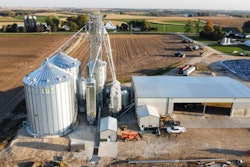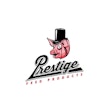
Soybean meal, containing 44 percent crude protein, remains the most common protein source for all compound feeds for pigs, poultry and dairy cattle, worldwide.
It is not only readily available on a global basis but also is priced so that any other protein source cannot easily compete with soybean meal. This position of eminence has not been attained easily and without considerable cost. Perhaps another protein source could easily have taken the position of soybean if it was cultivated at such extent while strong marketing forces promoted it on a global basis. In the end, soybean meal is the textbook protein source by which example or typical formulas are formulated for educational purposes, and one that remains the reference standard for all other protein sources.
Yet, soybean meal is but one of the many protein sources available, and alternatives abound. If they are not used as widely as they should be, this is because they remain relatively more expensive, they have been mislabeled as problematic due to anti-nutritional factors, and because an experienced nutritionist re-formulated the diets.
If we come to think about it, soybean meal is often too expensive by itself. Soybean meal also contains anti-nutritional factors, and nutritionists are not as inaccessible as some might believe. In essence, soybean meal is often used because it has become customary, whereas another protein source might be overpassed despite offering cost savings under proper guidance by a qualified professional.
The following six ingredients are such undervalued protein sources that ought to become as standard as soybean meal, at least in the regions they are produced in abundance.
6 alternative protein sources in animal diets
-
Palm kernel meal
The rapid growth of palm oil production in Asia, Australia, South America and Africa has led to tremendous quantities of palm kernel meal being available for all types of livestock. Not a protein-rich ingredient (less than 18% crude protein), palm kernel meal remains an interesting ingredient because it can contribute to significant cost savings.
It is poor in lysine and methionine, with average digestibility values, but it contains sufficient energy to constitute a good part of the total dietary protein fraction. It is also relatively high in crude fiber (up to 20%). In many aspects, palm kernel meal can be compared to corn gluten feed. It is speculated that any adverse effects of palm kernel meal observed can be due to its grittiness and overall physical quality aspects and not due to its nutrient profile. As such, high quality palm kernel meal can be used relatively freely, within constrains imposed by its limited nutrient profile.
As is the norm, diets for young animals should contain limited quantities of ingredients that are likely to cause digestive upsets, whereas on the other hand, such diets are often fortified with functional fibers.
-
Cottonseed meal
A by-product of the extraction of oil from cotton seeds, this protein source is not often available for poultry and pig feeds due to competition from ruminant feeds – especially dairy cattle feeds; something that increases its price.
Cottonseed meal contains about 40% crude protein, of moderate digestibility, whereas the major anti-nutritional factor is gossypol. Broilers can withstand much higher levels of gossypol compared with layers, but the usually high fiber concentration (15%) in cottonseed meal will pose an upper limit in formulation; the same is possible with young versus mature pigs.
In regards to gossypol, it is possible to reduce the negative effects by neutralizing it through the addition of certain iron salts. Low- or no-gossypol cultivars are also available yielding meals that are tolerated well by broilers. A gradual introduction into feed formulas is recommended. On the other hand, whole cottonseeds are often used as a common vehicle for supplying both protein and oil.
-
Sunflowers
Sunflowers are grown mostly in cold climates for their seeds. They are used for oil production or as a confectionary item. There are distinct varieties for each use because confectionary seeds are not rich enough to be used for oil production.
Sunflower meal is the residual matter after oil extraction, usually by the use of solvents (as in the case of soybeans), but also by hydraulic pressure (old method). The latter method produces sunflower meal rich in residual oil, and this should be taken into account during feed formulation. All animals will readily consume diets based on sunflower meal. This is due to the fact that sunflower meal contains a small amount of sugars, which give a sweet taste to feeds.
Sunflowers contain no significant anti-nutritional factors, in contrast to other protein sources such as soybean meal that contains a plethora of such compounds. Nevertheless, the use of sunflower meal in diets is restricted by its high concentration in crude fiber, something that is not always as undesirable or negative as it has been considered up to recent times.
-
Rapeseed
Rapeseed (Brassica napus and Brassica campestris), a member of the same family as mustard, cabbage, and turnips, is a major oil yielding crop, being third after soybeans and palm. It is cultivated in regions with colder climates that are usually unsuitable for soybeans. Regular varieties of rapeseed contain high levels of anti-nutritional factors that cause problems in all animals. These factors include glucosinolates (goitrogenic), erucic acid (toxic), tannins, sinapine, phytic acid, and mucilage.
The most important for animal production is glucosinolates that reduce feed palatability due to their ‘hot’ and pungent taste (same as mustard and horseradish). As these anti-nutritional factors are not greatly affected by heat treatment, it has been only through plant breeding that their presence has been significantly reduced. Modern varieties of rapeseed low in glucosinolates or erucic acid are often referred to as 0-rapeseed. Those low in both glucosinolates and erucic acid are referred to as as 00-rapeseed. The latter is the most common variety used today worldwide for oil production for human consumption. Canola is a 00-rapeseed variety produced in Canada and marketed under an ingenious national plan.
-
Lupins
Lupins are grown primarily in Australia and are also available in certain parts of Asia. Lupins contain 32 to 42% crude protein (depending on cultivar), of value comparable to that of soybeans. Their main limitation is the level of alkaloids, which has been reduced markedly in modern sweet lupin varieties. Otherwise, lupin inclusion levels in feeds is reduced by the remarkably high level of crude fiber (25%), a good part of which is pectins that cause increased gut viscosity.
The problem of high crude fiber concentration can be alleviated by dehulling, fine grinding, and perhaps with the addition of suitable enzymes. Lupins, unlike soybeans, do not require thermal processing before being fed to animals.
-
Dried distiller’s grains with solubles (DDGS)
A recent addition to the multitude of agro-industrial co-products, DDGS is produced during the transformation of corn starch into ethanol to be used as a bio-fuel. The remaining “waste” material, the DDGS, can be thought as being corn minus starch times three. That is, it contains three times the oil content of whole corn, or three times as much as calcium, protein, and all other nutrients – and about equal levels of energy. Lamentably, it also brings along three times the problems of corn. So, its protein profile is thrice as deficient in lysine, it contains three times the mycotoxins of normal corn, and the soft oil is likely to further increase the carcass fat softness, especially when DDGS are used along with corn and not with other cereals.
Nevertheless, DDGS remain a very useful ingredient that when used correctly it can bring about great cost savings.
Considerations for soybean meal alternatives
When considering using one or more alternatives to soybean meal, a qualified nutritionist will take the following four aspects into consideration before deciding about the maximum inclusion level permissible for each diet in question:
• Chemical analysis
The nutrients to be examined are not always the same and some may require further qualification. Nevertheless, the two most important nutrients are protein and fiber. To this, we must always strive to provide a detailed description of how the product is produced. Here’s an example: what we might consider as a typical cottonseed meal product (very common) may end up being a cottonseed cake meal product (very uncommon these days). Very similar names, but behind them are two different processing methods with two different by-products as the end result.
• Anti-nutritional factors
Soybeans are a major offender when it comes to anti-nutritional factors. But, we have learned to live with them, even neutralize most of them, and compensate for the rest. So, we consider soybean meal as the golden standard. When it comes to novel or alternative protein sources, however, we have a different array of anti-nutritional factors or very different levels of the same factors that we largely ignore in soybean meal. Using cottonseeds, again as an example, inappropriate formulation with this ingredient may result in hens laying eggs with a greenish yolk; a very interesting phenomenon from an academic point of view, but a very unpleasant one for a commercial egg farm.
• Reformulation of existing diets
Most nutrition books will mention that such and such ingredient may be added at x or y% in a given diet. This is of course an average figure that is intended as a general guideline for nutritionists. For example, cottonseed meal can be added up to 10% in a late-phase diet. Is it still the same if the same formula contains also rapeseed meal? Or, should we lower this maximum level because rapeseed meal is also rich in anti-nutritional factors? This is why a nutritionist needs to reformulate the diets based on existing performance, available ingredients, and why not, the threshold of risk associated with the desired profitability from using such alternative ingredients.
• Feed management
Once the diets have been reformulated, it is most likely the nutritionist will recommend a different daily feed intake – if the energy level has changed. Perhaps, there might be need to adjust the feed dispensing system if the feed bulk volume has changed. Either way, an eye should be kept on animals, in terms of health and productivity, for the first couple of weeks to ensure (a) they consume enough feed and nutrients to sustain productivity, and (b) they don’t suffer from excessive exposure to anti-nutritional factors that have been underestimated. If that is the case, the nutritionist will adjust the formulas taking into account real-case data.
Conclusion
Alternative protein sources can be a valuable tool in lowering feed cost for all animal feeds. Adding a novel protein source is not impossible, but putting together a diet that will also enable animals to maximize performance is something that requires knowledge to carefully balance many factors. It can be done, and if done correctly, it can be an attractive proposition. But if done haphazardly, the outcome will be reduced animal performance and/or health.
Editor’s note: This article originally ran in the February 2018 issue of Feed Strategy.















